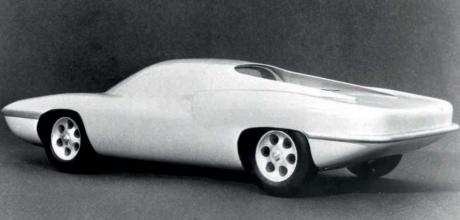Understanding the Jaguar XJ-S design
When I joined Jaguar in the mid-Seventies I was surprised to discover it was Malcolm Sayer who had initiated the XJ-S’s design since as a large grand tourer, it was a very different car from his most famous, the E-type.
But after time I started to understand the context in which the car was designed and context is always important. Part of that was something most people don’t think about which was the influence of the American market, California in particular, where most of its cars were sold. As the former president of Jaguar North America, Mike Dale, used to say, America was Jaguar’s home market since it was its biggest.
After the XJ-S had originally been conceived in the late Sixties, California had pending legislation that, if it had gone through, would have put an end to convertibles. Since California’s economy was bigger than Britain’s at the time, the state had serious clout over all European car manufacturers, Jaguar especially.
That explained why when the XJ-S was launched in 1975 it was a coupe only but it wasn’t until some years later that I discovered the reason behind one of its most recognisable design features.
In the early Eighties I found in a skip outside the Browns Lane studio a 1/10th scale model of a sports car, pictured above in the Sixties. Incredible to think now but at the time Jaguar was really unsentimental about its history and had little nostalgia.
I eventually learned the model was Sayer’s original concept for the car that eventually became the XJ-S. Mid-engined – which was fashionable at the time – it explained the eventual production car’s famous buttresses. You can see aerodynamically why they’re there, how they’re going to work.
But when I looked closer at the model, its link to Sayer was obvious because it carried many of the beautiful surfaces and shapes that characterised his designs.
A few years earlier he’d designed a potential racing car, the V12-engined XJ13, so he was already familiar with the dynamic advantages of a mid-engined car. It made this scale model the missing link between Sayer’s earlier Jaguar sports cars and the XJ-S.
I used to have the model on my desk in the studio until Jaguar’s engineering director, Jim Randle, saw it one day and asked if he could borrow it for something. I never saw it again.
With the Californian legislation not realised, the XJ-S was later transformed into a handsome convertible which, despite being based on the coupe, had perfect proportions. I’ve said in one of my previous columns how difficult that can be to achieve.
More importantly, the XJ-S has something else which all of Sayer’s cars have which was fantastic presence on the road which together with its perfect proportions and stance has always made it unique.
AT THE TIME JAGUAR WAS REALLY UNSENTIMENTAL ABOUT ITS HISTORY AND HAD LITTLE NOSTALGIA
Keith Helfet was a Jaguar designer between 1978 and 2002. His most famous creations are the XJ41, XJ220, XK 180 and F-type concept, plus the design themes for the XK8. He currently runs his own design company


